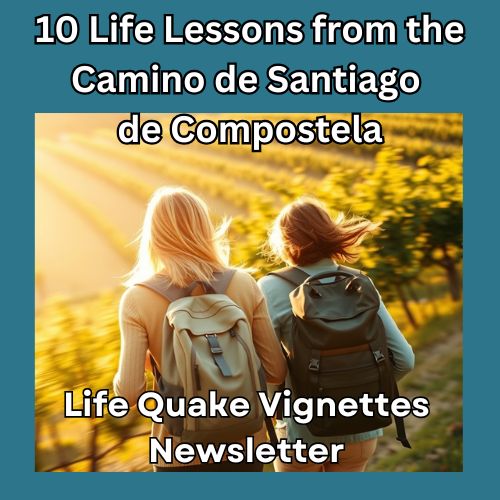Quick Summary
Are you enabling or empowering those around you? To Enable someone is to hand them a fish. To Empower someone is teaching them to fish, then helping them build their own fishing boat empire. One creates dependency; the other creates legends. The difference isn’t just semantic—it’s the gap between good intentions and transformational leadership.
Introduction
We’ve all been there: You know that moment when someone asks for your assistance, and you face a choice that seems deceptively simple but carries profound consequences. Do you step in and solve their problem, or do you step back and help them solve it themselves?
This isn’t just about being a good manager, parent, or friend. This is about understanding one of the most crucial distinctions in human development—the difference between enabling and empowering. Get it wrong, and you’ll create a dependent relationship that stunts growth. Get it right, and you’ll witness something magical: the transformation of potential into power.
The story I’m about to share will show you exactly what this looks like in real life, through the eyes of someone who learned this lesson the hard way—and how it changed everything.
The Story of Shelly Brooks: When Helping Hurts
The morning mist clung to the Scottish Highlands like a gossamer shroud as Shelly Brooks stood outside the retreat center, her breath forming small clouds in the crisp September air. The scent of heather and wet earth filled her nostrils, while the distant sound of a babbling brook provided nature’s gentle soundtrack to her racing thoughts.
Shelly had been running transformation retreats for eight years, and she prided herself on her nurturing approach. Participants left feeling supported, cared for, and genuinely helped. Her feedback forms were glowing testimonials to her dedication. But as she watched this morning’s group of twelve souls shuffle toward the main lodge, their footsteps muffled on the dew-soaked grass, she couldn’t shake the nagging feeling that something was fundamentally wrong.
Inside the lodge, the familiar aroma of freshly brewed coffee mingled with the woody scent of the log fire crackling in the stone hearth. The participants settled into the overstuffed armchairs arranged in a circle, their faces expectant, almost childlike in their anticipation. Shelly had seen this look thousands of times before—the look of people waiting to be saved.
“Welcome back, everyone,” Shelly said, her voice warm as honey. “I hope you all slept well after yesterday’s emotional breakthrough session.”
A chorus of murmured agreement filled the room, but Shelly noticed something that made her stomach tighten. Margaret, a 54-year-old teacher from Glasgow, was looking at her with the same desperate dependency she’d had on day one. So was David, the stressed executive. And Sarah, the overwhelmed mother of three.
As the morning progressed, Shelly found herself falling into her usual pattern. When Margaret struggled to identify her core values, Shelly gently guided her to the “right” answers. When David couldn’t figure out his next career move, Shelly offered detailed suggestions. When Sarah broke down crying about her work-life balance, Shelly provided a comprehensive action plan, complete with schedules and strategies.
The room felt thick with gratitude and relief. Participants nodded enthusiastically, scribbling notes with the fervor of students trying to capture every pearl of wisdom. But something cold and uncomfortable was growing in Shelly’s chest—a realization that tasted bitter as strong tea left too long to steep.
During the lunch break, as she stood alone on the terrace overlooking the moor, the weight of understanding hit her like a physical blow. The September wind whipped through her hair, carrying with it the earthy smell of approaching rain, and she finally admitted the truth she’d been avoiding for months.
She wasn’t helping these people. She was enabling them.
Every solution she provided, every answer she gave, every problem she solved was like a drug that offered temporary relief but prevented real healing. Her participants left feeling better, yes, but they also left exactly as dependent as when they’d arrived—maybe more so.
The sound of footsteps on gravel announced Margaret’s approach. “Shelly, dear,” she said, her voice carrying that familiar note of helplessness, “I’m still not sure about those values we discussed. Could you just tell me which ones you think would be best for someone like me?”
Standing there, with the Highland breeze carrying the scent of wild thyme and the distant bleating of sheep across the moor, Shelly made a decision that would transform not just her retreats, but her understanding of what it truly means to help another human being.
“Margaret,” she said, turning to face the older woman, “what do you think would be best?”
The confusion on Margaret’s face was painful to witness. She was so accustomed to being given answers that being asked to find them herself felt almost cruel. But Shelly held her ground, her heart hammering against her ribs as she fought every instinct to rescue Margaret from her discomfort.
What happened next was nothing short of miraculous.
After several minutes of uncomfortable silence, broken only by the rustle of leaves and the distant call of a curlew, Margaret’s expression began to change. The childlike dependency slowly gave way to something Shelly had never seen before in eight years of retreats—a spark of genuine self-discovery.
“Well,” Margaret said slowly, her voice growing stronger, “I suppose… I suppose I’ve always valued honesty above almost everything else. And creativity—yes, creativity. I became a teacher because I wanted to help children discover their own voices, not because someone told me to.”
The transformation was visible. Margaret’s shoulders straightened, her voice gained confidence, and for the first time since the retreat began, she looked like she was remembering who she actually was underneath all the uncertainty.
That evening, as rain drummed against the lodge windows and the fire crackled with renewed vigour, Shelly addressed the group with a completely different approach. Instead of providing answers, she asked powerful questions. Instead of solving problems, she created safe spaces for people to solve them themselves. Instead of rescuing, she witnessed.
The shift in the room was palpable. The air itself seemed to vibrate with a different energy—not the desperate hunger of people waiting to be fed, but the electric anticipation of individuals discovering they could feed themselves.
By the final morning, as golden sunlight broke through the Scottish clouds and painted the moor in shades of amber and gold, Shelly watched twelve people prepare to leave who bore little resemblance to the group that had arrived five days earlier. They moved differently—with purpose rather than hesitation. They spoke differently—with conviction rather than uncertainty. They were different.
Margaret approached Shelly one last time, but this time her footsteps were firm, her posture upright. “Thank you,” she said, her eyes bright with unshed tears of gratitude. “Not for giving me the answers, but for helping me remember I had them all along.”
As the participants loaded their bags into taxis and hugged their goodbyes, Shelly realised she had stumbled upon the secret that separates truly transformational leadership from well-meaning interference. She had learned the profound difference between enabling and empowering—and it had changed everything.
5 Enabling or EmpoweringTakeaways
1. Enabling Creates Dependence, Empowering Creates Independence
When we enable, we become the hero of someone else’s story. When we empower, we help them become the hero of their own. The goal isn’t to be needed—it’s to help others discover they don’t need to be rescued.
2. Discomfort Is the Price of Growth
Shelly learned that allowing people to struggle with their own questions, sit with uncertainty, and work through challenges is often the greatest gift we can give. Comfort zones are called that for a reason—nothing grows there.
3. Questions Are More Powerful Than Answers
The right question at the right moment can unlock years of self-discovery. When we provide answers, we rob people of the journey. When we ask powerful questions, we become guides rather than crutches.
4. True Help Sometimes Looks Like Not Helping
The most transformational leaders know when to step back. Sometimes the most loving thing you can do is refuse to rescue someone from their own growth opportunity.
5. Empowerment Is About Recognition, Not Installation
We don’t empower people by giving them power—we help them recognise the power they already possess. Every person has wisdom, strength, and capability within them. Our job is to help them see it, not to provide it.
Several research articles have directly examined the concepts of empowering versus enabling, ex. Espeland and Shanta (2001) discuss the difference in higher education settings, emphasising that empowering helps individuals gain autonomy and accountability, whereas enabling can undermine genuine growth by fostering dependency. Their model compares collegiality, communication, accountability, and autonomy in academic environments. (Espeland K, Shanta L. Empowering versus enabling in academia. J Nurs Educ. 2001 Nov;40(8):342-6. )
The Mirror Exercise: Discovering Your Enable or Empower Patterns
This exercise will help you identify where you might be inadvertently enabling rather than empowering in your relationships and leadership roles.
Step 1: Reflection Inventory Take 15 minutes to write down your responses to these questions:
- Who in your life comes to you repeatedly with the same types of problems?
- When someone asks for help, what’s your immediate impulse—to solve or to guide?
- Think of someone you’ve “helped” extensively. Are they more capable now, or more dependent?
Step 2: The Language Audit For one week, pay attention to the language you use when helping others. Write down instances where you:
- Gave direct advice vs. asked guiding questions
- Solved problems vs. helped others problem-solve
- Rescued vs. supported
Step 3: The Switch Choose one relationship where you suspect you might be enabling. For the next two weeks:
- Replace advice with questions (“What do you think would work best?”)
- Resist the urge to rescue (“This sounds challenging. How might you approach it?”)
- Celebrate their successes, not your help (“You figured that out beautifully!”)
Step 4: Results Review After two weeks, reflect on:
- How did the dynamic change?
- What resistance did you encounter (from them and from yourself)?
- What growth did you observe?
This exercise isn’t about becoming cold or unhelpful—it’s about discovering the profound difference between being a crutch and being a catalyst.
“Give a man a fish and you feed him for a day; teach a man to fish and you feed him for a lifetime.” — Chinese Proverb
This ancient wisdom perfectly encapsulates the enable vs empower distinction. But here’s why this quote is so appropriate for our discussion: it’s not just about practical skills (the fish), it’s about mindset and capability (the fishing).
When we enable, we’re handing out fish—solving immediate problems but creating long-term dependency. When we empower, we’re teaching fishing—investing in someone’s long-term capability and self-sufficiency. The Chinese understood something profound about human development: temporary relief versus permanent transformation.
But I’d add a modern twist to this ancient wisdom: “Teach someone to fish and you feed them for a lifetime. Help them discover they can find out how to fish, and you’ve given them something far more valuable—confidence in their own wisdom.”
Further Reading: 5 Essential Books
1. “The Coaching Habit” by Michael Bungay Stanier
Why this book: Stanier brilliantly demonstrates how asking the right questions transforms relationships from dependent to empowering. His “Seven Essential Questions” framework is pure gold for anyone wanting to move from advice-giver to empowerer. It’s practical, funny, and life-changingly simple.
2. “Leadership and Self-Deception” by The Arbinger Institute
Why this book: This book exposes the subtle ways we deceive ourselves into thinking our “helping” is actually about the other person, when it’s often about our own need to be needed. It’s a powerful exploration of how enabling behaviors often serve our ego rather than others’ growth.
3. “Rising Strong” by Brené Brown
Why this book: Brown’s research on resilience shows how crucial it is for people to work through their own struggles rather than being rescued from them. Her insights into vulnerability and courage directly support the empowerment approach over enabling.
4. “Multipliers” by Liz Wiseman
Why this book: Wiseman’s research reveals how some leaders amplify others’ intelligence and capability (multipliers) while others diminish it (diminishers). It’s a masterclass in recognising and developing the genius in others rather than trying to be the genius for others.
5. “The 15 Commitments of Conscious Leadership” by Jim Dethmer, Diana Chapman, and Kaley Klemp
Why this book: This book challenges leaders to examine their unconscious motivations for “helping” others. It’s particularly powerful in revealing how our need to be right, good, or in control can masquerade as helpful leadership while actually disempowering those we lead.
Frequently Asked Questions
Q: Isn’t there a time and place for direct help? When is enabling actually appropriate?
A: Absolutely! In crisis situations, when someone lacks basic resources, or when there’s a genuine knowledge gap, direct help is not only appropriate—it’s essential. The key is intention and outcome. Ask yourself: “Am I solving this because they genuinely can’t, or because it’s easier/faster for me to do it?” Emergency situations call for enabling; growth situations call for empowering.
Q: What if someone gets upset when I stop giving them direct answers and start asking questions instead?
A: This is completely normal and actually a good sign! Resistance often indicates you’ve hit something important. People accustomed to being enabled may initially feel frustrated, abandoned, or even angry when you shift to empowering them. Hold steady, explain your intention, and give them time to adjust. The discomfort is temporary; the growth is permanent.
Q: How do I know if I’m being too harsh in my attempt to empower rather than enable?
A: Great question! Empowerment should never feel cruel or abandoning. You’re still present, supportive, and caring—you’re just changing how you help. Ask yourself: “Am I still showing up with love and support, just in a different way?” If someone feels completely alone or unsupported, you’ve swung too far in the other direction.
Q: What about children? Surely they need more direct help and guidance?
A: Children do need more direct support, but the principles still apply in age-appropriate ways. A toddler needs you to tie their shoes; a ten-year-old can learn to tie their own. Even with children, we can ask questions like “What do you think we should do?” or “How might we solve this?” The goal is gradually building their problem-solving muscles rather than doing everything for them.
Q: I’m worried that if I stop enabling, people won’t need me anymore. How do I deal with this fear?
A: This fear reveals something beautiful about your caring nature, but also exposes a potential trap. If people only need you because you solve their problems, that’s not really connection—it’s transaction. True relationships are built on mutual respect, love, and growth, not dependency. When you empower others, you may be needed less, but you’ll be valued more. You’ll become someone they turn to for wisdom and support, not just problem-solving.
Conclusion
The journey from enabling to empowering isn’t just about changing how we help others—it’s about transforming how we see others. When we enable, we unconsciously communicate: “You can’t handle this.” When we empower, we declare: “You have everything you need within you.”
Shelly Brooks discovered this truth on a misty morning in the Scottish Highlands, but the lesson applies whether you’re leading a team, raising children, or supporting a friend. The shift from rescuer to guide, from answer-provider to question-asker, from hero to witness is one of the most profound transformations any of us can make.
It’s not always comfortable. Growth rarely is. But on the other side of that discomfort lies something extraordinary: the deep satisfaction of watching someone discover their own strength, the joy of witnessing transformation rather than dependency, and the profound connection that comes from truly serving another’s highest good.
The next time someone comes to you for help, pause. Take a breath. And ask yourself: “Am I about to enable or empower?” The answer will determine whether you’re offering a fish or teaching fishing—and that makes all the difference in the world.
Ready to experience the difference between being enabled and being empowered?
Join me for a transformative walking retreat on the ancient Camino de Santiago through the stunning countryside of southwest France. Unlike traditional retreats where you’re given all the answers, our Camino experience helps you discover your own wisdom through the rhythm of walking, the beauty of nature, and the gentle guidance of someone who understands the profound difference between rescuing and supporting.
These stress-relief retreats are designed for busy professionals and overwhelmed souls who want to reconnect with their inner strength and clarity—not through being told what to do, but through remembering who they already are.
Because sometimes the best way forward is simply to put one foot in front of the other, and trust that you have everything you need within you.
Learn more about the Rediscover Your Natural Rhythm French Camino de Santiago walking retreats and discover your own path to clarity and calm.

10 Powerful Life Lessons Learned While Walking the Camino de Santiago – a free guide filled with 10 not just “quaint anecdotes” or Instagram-worthy moments (though there are plenty of those) but real transformations from real people who walked the same insight-giving trail you might want to walk one day – Subscribe to my monthly newsletter to Download the Guide

“I am an experienced medical doctor – MBChB, MRCGP, NLP master pract cert, Transformational Life Coach (dip.) Life Story Coach (cert.) Stress Counselling (cert.) Med Hypnotherapy (dip.) and EAGALA (cert.) I may have an impressive number of letters after my name, and more than three decades of professional experience, but what qualifies me to excel at what I do is my intuitive understanding of my clients’ difficulties and my extensive personal experience of managing major life changes using strategies I developed over many years.” Dr M Montagu

